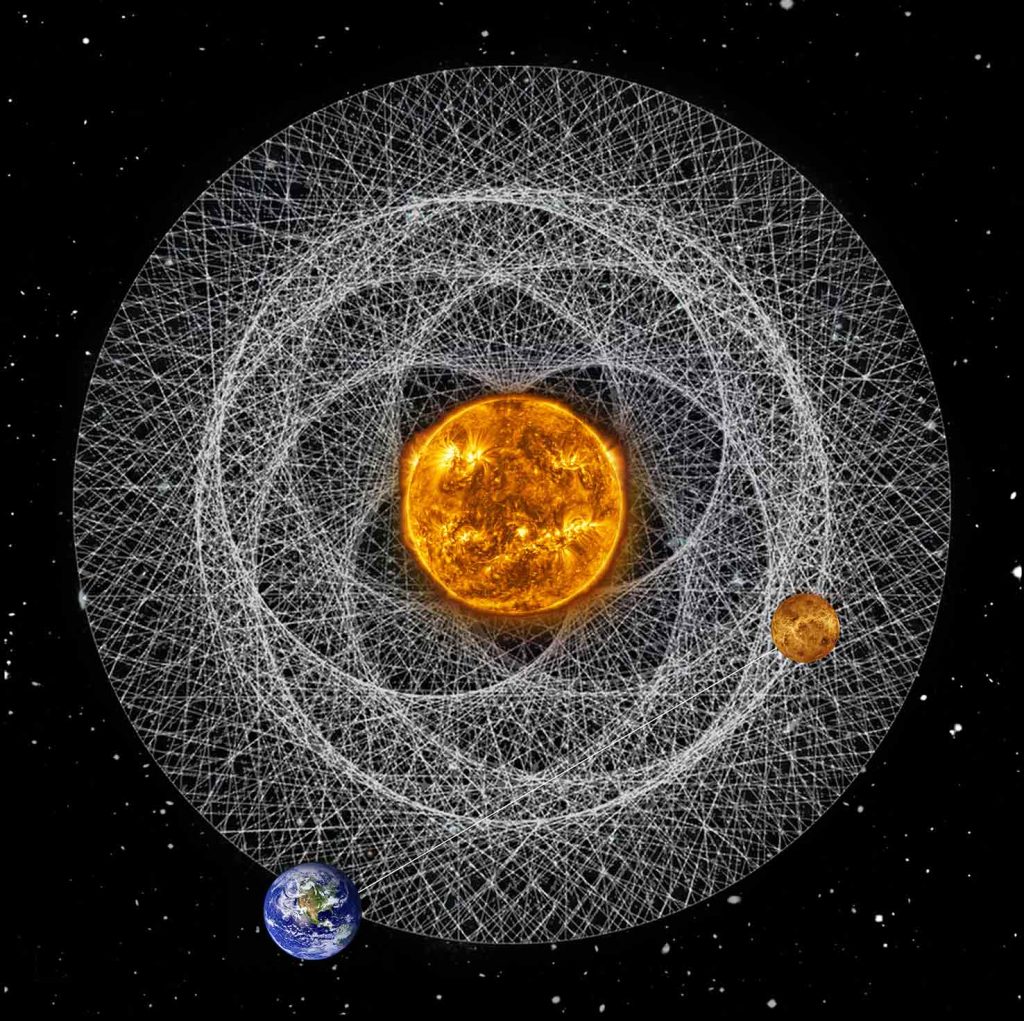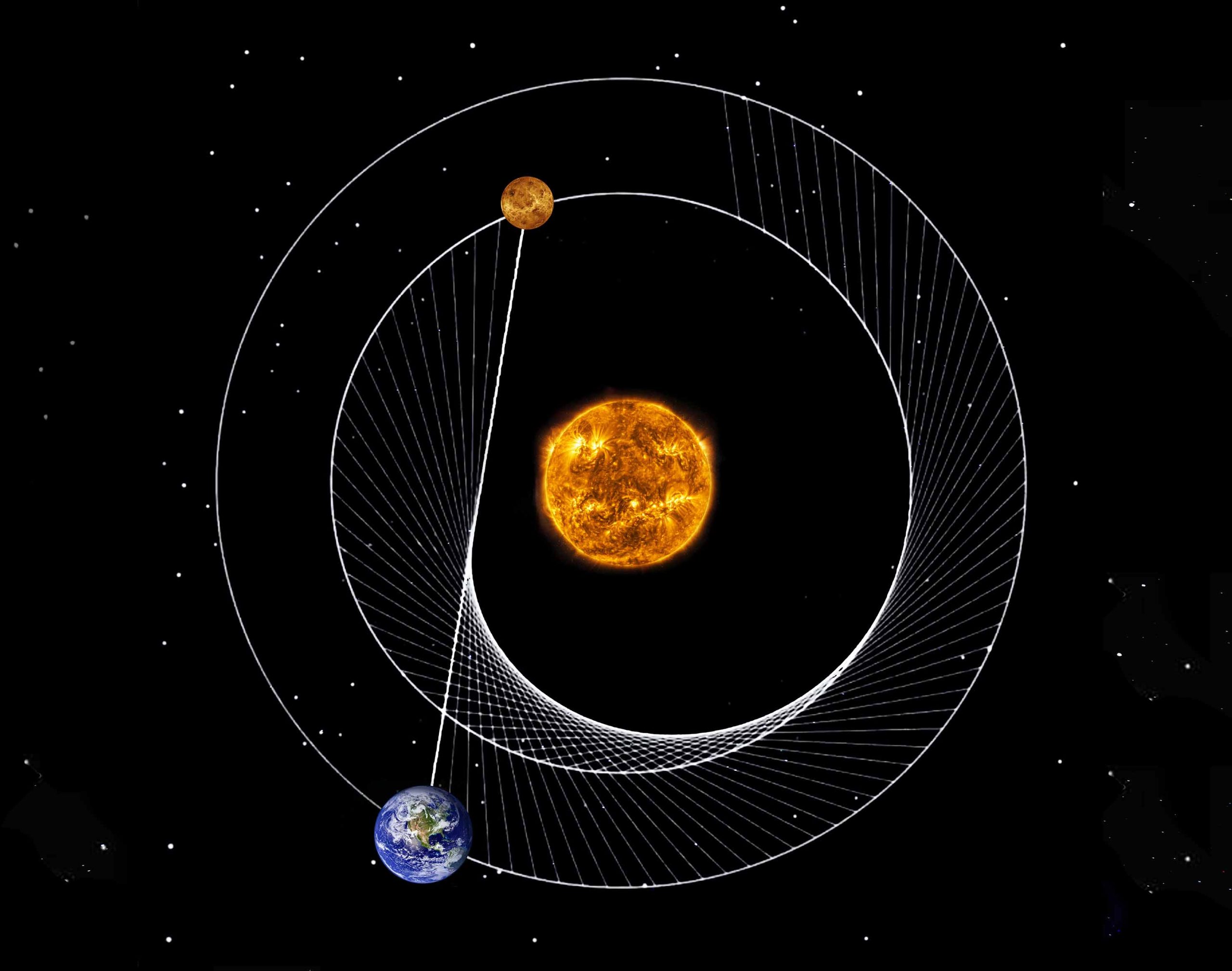Welcome to SpaceyV, your go-to source for everything space-related! Today, we delve into the mesmerizing “Dance of Venus“—a celestial phenomenon that has fascinated astronomers, astrologers, and stargazers alike for centuries. From its captivating orbital patterns to its significance in various cultures, Venus’s cosmic dance is more than just a planetary movement; it’s a symphony of science, mythology, and wonder.
The Orbit of Venus: A Unique Cosmic Dance
Venus, often referred to as Earth’s sister planet due to its similar size and composition, follows an intriguing orbit around the Sun. Unlike most planets, Venus’s orbit is nearly circular, and it rotates in the opposite direction to most other planets in our solar system. This retrograde rotation adds an extra layer of mystery to Venus’s journey through space.
But what truly sets Venus apart is its orbital resonance with Earth. Every eight years, Venus traces a pentagram-like pattern in the sky, known as the Venus Pentacle or Five-Petaled Rose. This rare geometric alignment has inspired countless legends and astrological interpretations, symbolizing harmony, love, and balance.
You can Read also : The Evening Star Venus – All Things You Need to Know !
What is the dance of Venus?
The “Dance of Venus” refers to the unique pattern Venus creates in the sky when observed from Earth. Over an 8-year cycle, Venus traces a five-pointed star or pentagram shape due to its orbital resonance with Earth. This pattern is the result of the planet’s regular alignments with Earth and the Sun, making it a visually and scientifically fascinating phenomenon.
What is the 40 year cycle of Venus?
You can Also read this article : Mars Venus Moon Conjunction
Venus in Mythology: The Goddess of Love
Venus is not just a planet; it is also the Roman goddess of love, beauty, and fertility. The planet’s bright, radiant appearance in the dawn and dusk skies has led many ancient civilizations to associate it with divine feminine energy. In Greek mythology, Venus is known as Aphrodite, and in Babylonian culture, she is Ishtar, the goddess of love and war.
These mythological connections extend to the planet’s influence in astrology. Venus is often linked with matters of the heart, art, and personal values. The “Dance of Venus” is seen as a cosmic reminder of the cycles of love, relationships, and creativity in our lives.

Observing Dance of Venus : A Guide for Stargazers
One of the reasons Venus is so beloved by sky watchers is its brilliant visibility. As the third-brightest object in the sky after the Sun and Moon, Venus is easily spotted with the naked eye. It appears as the “Evening Star” shortly after sunset or as the “Morning Star” just before sunrise, depending on its position in its orbit.
To observe Venus’s dance, you’ll need to track its movement over several months. The best time to view Venus is during its greatest elongation, when it is farthest from the Sun in the sky, making it more visible. With a telescope, you can even observe the planet’s phases, similar to those of the Moon.
The Scientific Significance of Venus’s Dance
The “Dance of Venus” isn’t just a visual treat; it holds significant scientific importance. Understanding Venus’s orbit helps scientists study the dynamics of our solar system. Venus’s atmosphere, rich in carbon dioxide and sulfuric acid clouds, provides critical insights into the greenhouse effect, making it a key subject in climate science research.
Moreover, the study of Venus’s orbit and its synchronization with Earth’s has applications in space exploration, particularly in planning spacecraft trajectories and understanding gravitational influences between planets.
Venus in Popular Culture
The “Dance of Venus” has not only influenced science and mythology but has also found its way into art, literature, and popular culture. From Renaissance paintings depicting the goddess Venus to modern science fiction narratives, the planet’s allure continues to captivate imaginations.
In music, Gustav Holst’s “The Planets” suite includes a movement dedicated to Venus, which he aptly describes as the “Bringer of Peace.” Venus’s serene yet enigmatic presence in the cosmos has inspired artists, writers, and musicians to explore themes of love, beauty, and the mysteries of the universe.
You can Also read : What is man face in the moon ?

Conclusion: The Eternal Dance of Venus
The “Dance of Venus” is more than just an astronomical event; it is a cosmic ballet that has inspired humanity for millennia. Whether you’re a scientist intrigued by its orbital mechanics, an astrologer interpreting its symbolism, or a stargazer marveling at its beauty, Venus’s dance is a reminder of the harmony and mystery that pervades our universe.
At SpaceyV.com, we celebrate the wonders of space, and the Dance of Venus is a perfect example of the celestial phenomena that connect science, culture, and art. So next time you look up at the night sky, take a moment to appreciate Venus’s graceful journey—a dance that continues to enchant us all.



